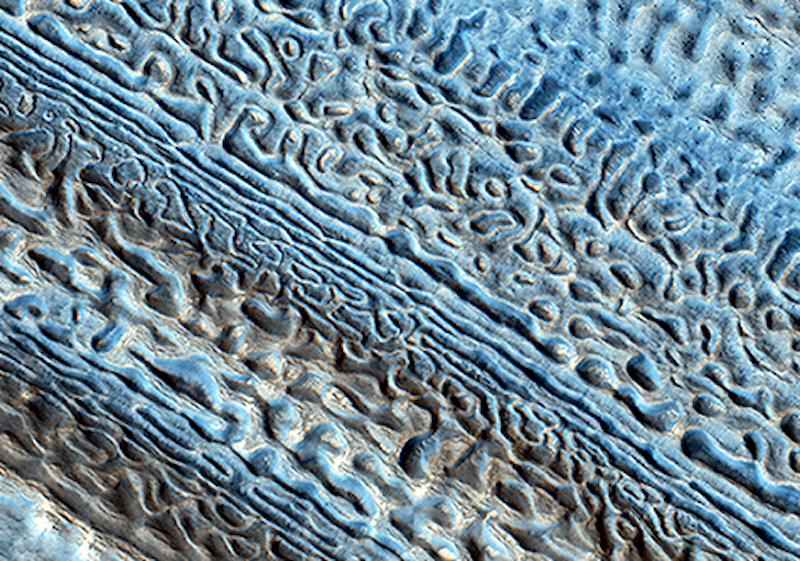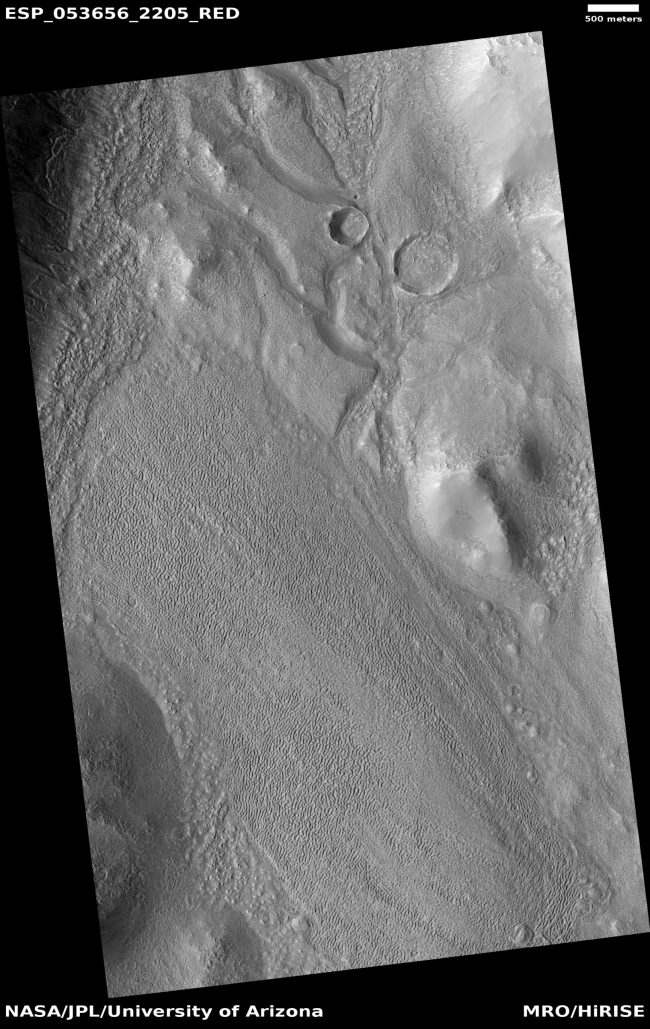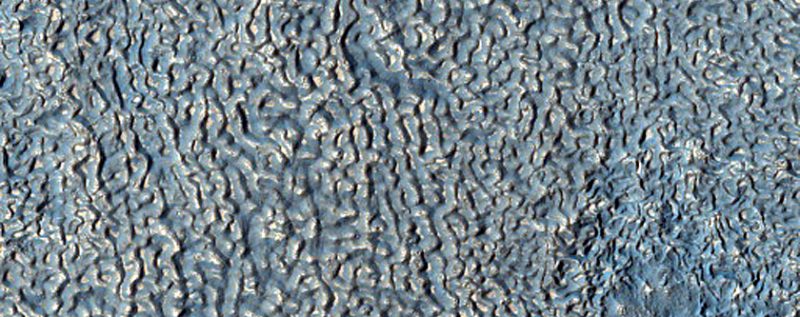
Like Earth, Mars is geologically diverse. It has mountains, volcanoes, craters, valleys, ancient riverbeds and lakes. But Mars has something Earth doesn’t have: what scientists call brain terrain. The ridges and loops in this mid-latitudes landform look a lot like the wrinkled surface of a human brain. In photos at least, the terrain has a kind of organic feel to it.
Michelle Starr wrote about this unusual landscape in ScienceAlert on August 25, 2023. NASA had previously posted the original images on its HiRISE website on September 18, 2013.

If you didn’t already know, HiRISE is the camera system on Mars Reconnaissance Orbiter (MRO) that takes all those stunning images of Mars from orbit.
Weird ‘brain terrain’ on Mars
Brain terrain on Mars is weird-looking. Long parallel strips consisting of many small ridges form loops or whorls. It almost looks like some kind of intricate maze. And, yes, it’s reminiscent of the surface of a human brain. But the scale is different. These ridges are about 4 to 5 meters (13 to 16 feet) tall!

Brain terrain is found in the mid-latitude regions of Mars. It’s found where the cratered southern hemisphere highlands meet the smoother northern hemisphere lowlands. There’s growing evidence that these lowlands were once the bottom of a vast northern ocean.
Could that be a clue to how brain terrain forms?

How does it form?
It’s probably no coincidence that Martian brain terrain forms where there’s a lot of water ice in the ground. Scientists say there are three main hypothesies about brain terrain. Writing at ScienceAlert, Michelle Starr wrote:
One possibility is that the ridges … and furrows are carved out by ice flows somehow.

Another possibility is that the formations are the product of water ice under the surface. Sublimation of the ice through fractures could cause the ground above it to collapse, resulting in pitted, textured terrain.
A third hypothesis suggests that the terrain could be created similarly to stone sorting processes here on Earth. When the ground freezes, it expands, heaving and lifting the sediment; when the frost thaws, the loosened sediment falls back, and the different stones within tend to fall together according to size. Here on Earth, over repeated freeze-and-thaw cycles, this creates patterns on the ground.

Brain terrain-like formations on Earth
These are plausible formation processes, although there isn’t anything on Earth exactly the same. The closest analogy is something called terrestrial brain terrain in the Canadian Arctic. Scientists first identified it in 2019. The linked paper is from the Seventh Mars Polar Science Conference 2020, hosted by the Universities Space Research Association (USRA).

The two primary hypotheses for its formation are depositional sorting, glacial processes with melting or sublimation and polygonal cracking, or a combination of the two. These are similar to some of the hypotheses suggested for the Martian brain terrain. As the USRA paper explains:
Two hypotheses for brain terrain formation have been proposed, both of which are periglacial in nature. (1) Frost heave mechanisms similar to stone circle sorting processes, and (2) Differential interstitial ice sublimation of LDM [latitude dependent mantle] material. These hypotheses suggest brain terrain forms under either strictly wet or dry periglacial processes.

Interesting patterns occur on a smaller scale on Mars’ surface, too. For example, scientists reported earlier this month that NASA’s Curiosity rover discovered intriguing hexagonal shapes in the ground.
In this case, those patterns are ancient mud that dried out billions of years ago. In fact, they look just like dried out mud on Earth.
Bottom line: So-called “brain terrain” is one of the most unusual geological formations found on Mars, reminiscent of the surface of a human brain. What causes it?